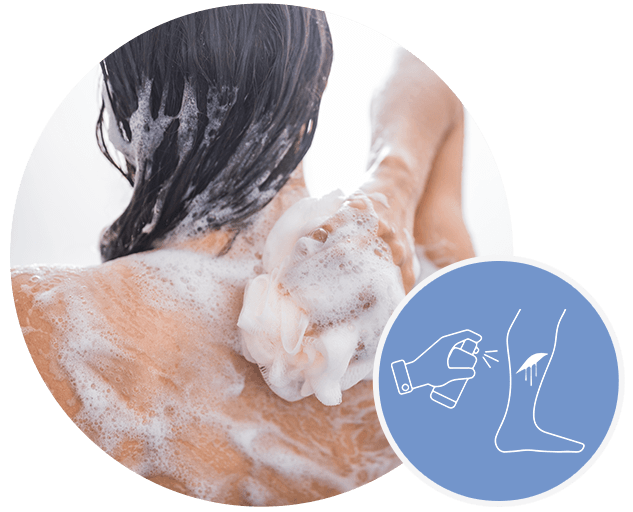The Microbiotics Company
Products for wound infections
Staphylococcus aureus and MRSA
Staphylococci are widespread bacteria that colonise the human and animal skin and mucous membranes. Staphylococcus species belong to the normal microbiota of the human skin, where they ensure healthy skin protection, e.g. Staphylococcus epidermidis.
Staphylococcus aureus can also be found on almost every skin, although it is one of the causes of inflammation. S. aureus is considered one of the most widespread inflammatory germs and is the cause of many severe inflammatory processes.
The frequent use of antibiotics has led to a dramatic increase in bacterial resistance in recent years so that many germs can no longer be combated with antibiotics.
In the case of S. aureus, methicillin-resistant strains are found with alarming frequency (MRSA = methicillin-resistant S. aureus). These are an increasing problem, especially in hospitals and clinics. This is because they have become resistant not only to methicillin and other antibiotics in the class of beta-lactam antibiotics (the most important ATB group for the treatment of staphylococcal infections) but often also to other antibiotics (multiple or multi-resistant). There is no satisfactory solution to this problem today.
For example, patients carrying MRSA must be quarantined. If the germ gets into wounds, serious infections such as sepsis (blood poisoning) are a frequent consequence. They can lead to serious health problems and even death.


aureosan® - microbiotic agent for the removal of multi-resistant S. aureus germs
With aureosan®, we have found a microbiotic active ingredient that specifically targets and removes the inflammatory bacterium Staphylococcus aureus.
And this without affecting the microbiome, the protective bacteria on the skin. Due to its special mode of action, aureosan® is particularly effective and very specific against MRSA germs.
The surface of the active ingredient aureosan® has a high contact affinity for Staphylococcus aureus. Due to the surface structure, the active ingredient and the inflammatory germ aggregate when touching their surfaces within milliseconds. Aggregates of Staphylococcus aureus with aureosan® can be seen under the electron microscope. Staphylococcus aureus is thereby bound and agglutinated. The germ is removed by mechanical removal of the aggregates, e.g. by washing.
The active ingredient aureosan® is derived from a unique strain of the specific lactic acid bacterium Lactobacillus gasseri DSM25908. aureosan® is produced using a microbiological high-tech process, in which the shells of the lactic acid bacteria are enriched and stabilized.
aureosan® is protected by patent.
aureosan® – Products
Based on the microbiotic active ingredient aureosan®, products will be developed for various applications.
These include microbiotic skin cleansing agents such as shower oil or washing gel for hygiene measures in patients.
By applying the aureosan® products during washing, the inflammatory germs should be bound and removed from the skin with the washing off.
With the strategy of restoring the body’s own skin protection barrier by mobilizing the skin’s self-healing powers, much faster and more sustainable progress in the fight against inflammatory situations is expected than is possible today.


aureosan® for medical skin care:
- aureosan® in skin cleansing products such as shower oil or washing gel binds the inflammatory germs and enables their specific and at the same time microbiome-friendly removal during skin cleansing. The new microbiotic skin cleansing products will complement the already successfully used ibiotics med products.
- aureosan® skin cleansing supports the treatment of inflammatory skin diseases such as atopic dermatitis, psoriasis or acne.